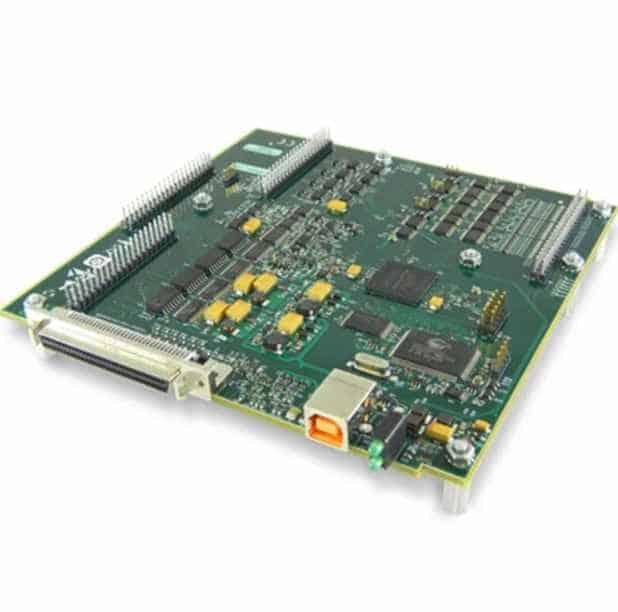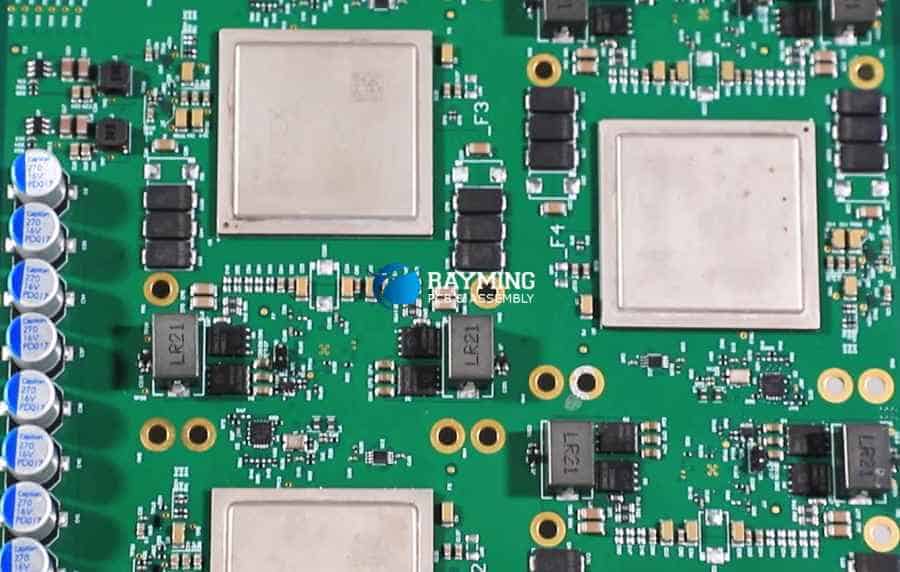Leveraging Rapid Prototyping for Faster Product Development
The ability to quickly build printed circuit board (PCB) prototypes enables companies to validate designs faster and reduce overall product development timelines. This article will examine the benefits of fast turn PCB prototypes and provide actionable techniques to slash prototyping lead times.
The Value of Fast Prototype Iterations
Getting working PCB prototypes into the hands of engineers and product designers quickly provides several advantages:
- Faster design validation – Iterate on the schematic and layout faster when you can build and test new revisions in days rather than weeks.
- Accelerated time-to-market – Overall product development pace is improved when prototyping happens rapidly.
- Increased innovation bandwidth – Engineers can pursue more ideas and design variations when prototypes are fast and low-cost.
- Higher product quality – More prototype iterations mean more chances to refine, test, and catch issues earlier.
- Improved morale – Quick prototype turns keep the team motivated and engaged.
Balancing prototyping speed with costs is ideal to maximize innovation velocity.
Typical PCB Prototype Process
To understand techniques for fast turn prototyping, it helps to first review the typical PCB design process:
- Schematic Capture – The circuit schematic is designed in CAD showing components and connectivity.
- PCB Layout – Components are virtually laid out on a PCB with routing to connect nodes.
- Design Validation – The CAD files are checked for errors and standards compliance.
- Gerber Generation – Manufacturing-ready Gerber files are exported from the CAD tools.
- PCB Fabrication – A bare PCB is fabricated based on the gerber file.
- Assembly – Components are soldered onto the fabricated PCB.
- Testing – The prototype is verified to match expected functionality.
- Iteration – Flaws discovered during testing are fixed in the next design spin.
Steps 5-8 often represent the critical path for prototyping velocity.

Strategies for Fast Turn PCB Prototypes
To accelerate steps 5-8, design teams should pursue the following strategies:
1. Use Pre-Approved PCB Prototyping Processes
Partner with assembly providers that offer standardized quick-turn prototyping services with predefined deliverables, design rules, and components. These services have validated workflows to slash lead time.
2. Design with Proven, Readily Available Components
Avoid cutting-edge or long lead time components not widely available through distribution. Use proven parts likely already in stock with suppliers.
3. Reduce Layer Count in Early Prototype Stages
Higher layer count PCBs add fabrication and assembly time. Stick to 2-4 layers early and only increase for final prototypes when necessary.
4. Avoid Connectors When Possible
Connectors add cost and assembly steps. Consider soldering cables direct to boards to save time.
5. Order Circuit Cards Only When Iterating Circuit Design
In early stages focused on component evaluation, consider soldering breakout boards by hand or using breadboards/perfboard before investing in custom PCB fabrication.
6. Use Modular Design
Build upon common PCB building blocks that enable quickly swapping components without redesigning from scratch each time.
7. Design with Manufacturing in Mind
Follow assembly-friendly design rules and utilize standardized footprints, pads, traces, etc. to avoid delays or re-spins.
8. Share Design Data Early in Standard Formats
To start manufacturing rapidly, share complete Gerber, BOM, placement, fabrication/assembly drawings in standard formats as soon as the design is finalized.
9. Build Small Batches
Prototyping only requires a few boards. Starting with builds of 10-25 units reduces lead time.
10. Test Prototypes Under Real-World Conditions
Validate performance, reliability, electrical characteristics, etc. under expected use conditions to fully prove the design quickly.
| Prototype Stage | Applicable Tactics |
|---|---|
| Early Concept Validation | Pre-approved process, stock components, limited layers, hand assembly |
| Design Verification | Small batches, modular design, manufacturing-focused layout |
| Validation Testing | Real-world condition testing, larger batches |
The above table summarizes applicable tactics based on the prototype stage.
Prototyping Process Optimization
In addition to the design strategies noted above, assembly providers can employ process refinements to slash prototyping lead times:
- Front-load planning – Review design, order long-lead components, finalize tooling in advance.
- Modular setups – Standardize machine configurations, feeders, programs for quick changeovers between builds.
- Prioritize prototyping – Dedicate resources and capacity to fast turn work.
- Staged component supply – Bring components in waves, start builds with available parts to avoid shortages.
- Rapid programming – Leverage common libraries/macros, validate on similar designs, automate steps.
- Kitting optimization – Organize parts for efficient staging and assembly line pick-and-place.
- Enhanced test coverage – Leverage automation for electrical testing, ICT, functional validation when possible.
- Concurrent activities – Perform steps like fabrication, stencil creation, and programming in parallel rather than sequentially.
With these process enhancements in place, assembly partners can deliver prototypes in just 24-48 hours in many cases.
Real-World Fast Turn Prototype Examples
To make these techniques more concrete, here are two examples of fast turn prototyping in action:
Consumer Electronics Example
A maker of smart home products has an urgent need to build updated prototypes with key feature additions for an upcoming showcase event in 10 days. They leverage a pre-approved quick-turn assembly service offered by their manufacturing partner which guarantees 10 unit prototypes in 2-3 days based on supplied design data. The predefined service uses proven components and simplifying assembly options like edge mount connectors to ensure rapid fabrication and component kitting. The maker finalizes their design using the approved component list and layout conventions. They complete the design files and submit the data to kick-off the standardized prototype build. The assembly provider’s dedicated prototyping team reviews the files within 24 hours and identifies no issues. They complete preparation in advance so materials are ready to go as soon as the design files are finalized. The assembly provider delivers 12 functioning prototypes 3 business days after design submission, in time for the prototypes to be integrated and demonstrated at the showcase.
IoT Product Example
An IoT startup wants to quickly build updated versions of a sensor hub PCB to test different power management configurations. They utilize modular design with interchangeable power components that can be rapidly swapped to create new prototype variants. The startup uses pre-sourced standard components available via supplier stock for fast procurement. They leverage an expedited prototype service from their contract manufacturer that guarantees 5 day turnaround on builds under 50 units. whenever power module changes are validated in simulation, Gerber design files with a BOM are sent for a new prototyping spin. The contract manufacturer reviews the limited changes and pulls from common modular programming libraries to complete rapid assembly. Within 5 days the startup has new sensor hub prototypes to test in their lab and with early customers. This enables them to efficiently evaluate different power schemes and battery optimization trade-offs.

Key Takeaways
- Faster PCB prototyping iterations enable accelerated validation, tighter design-build-test loops, and shorter time-to-market.
- Utilize predefined quick-turn processes and constraints provided by assembly partners.
- Carefully select readily available components and minimize customization.
- Design with manufacturability in mind and provide complete data proactively.
- Start with lower layer counts and smaller batches when possible.
- Assembly partners can optimize planning, programming, supply staging, resource allocation, and more to enable fast turns.
With the right approach, electronics companies can now prototype complex designs and rigorously test concepts in just days or a few weeks rather than months.
Frequently Asked Questions
What is the typical lead time for fast turn PCB prototypes?
Leading assembly providers can deliver small batches of proven PCB prototypes in as little as 24-48 hours. More complex designs may need 5 days minimum.
What are the recommended quantities for initial prototypes?
To save cost and time, start with very small batches like 5 or 10 units for simple validation. Up to 25-50 boards provides enough flexibility for some testing and future iterations.
What are some key fast turn prototype design guidelines?
- Use common off-the-shelf components
- Follow manufacturer design rules and footprint conventions
- Prioritize easy assembly and avoid connectors
- Reuse proven modular sub-circuits
- Share native CAD files early in standard formats
What process improvements can accelerate PCB prototyping?
Some examples include front-loaded planning, programming reuse, staged component supply, efficient changeovers between builds, dedicated prototype resources, and increased testing automation.
How can I source components quickly for prototypes?
Work closely with distributors to ensure standard parts are reserved and stocked for your prototyping needs. Utilize suppliers with extensive local inventories near assembly facilities.



0 Comments